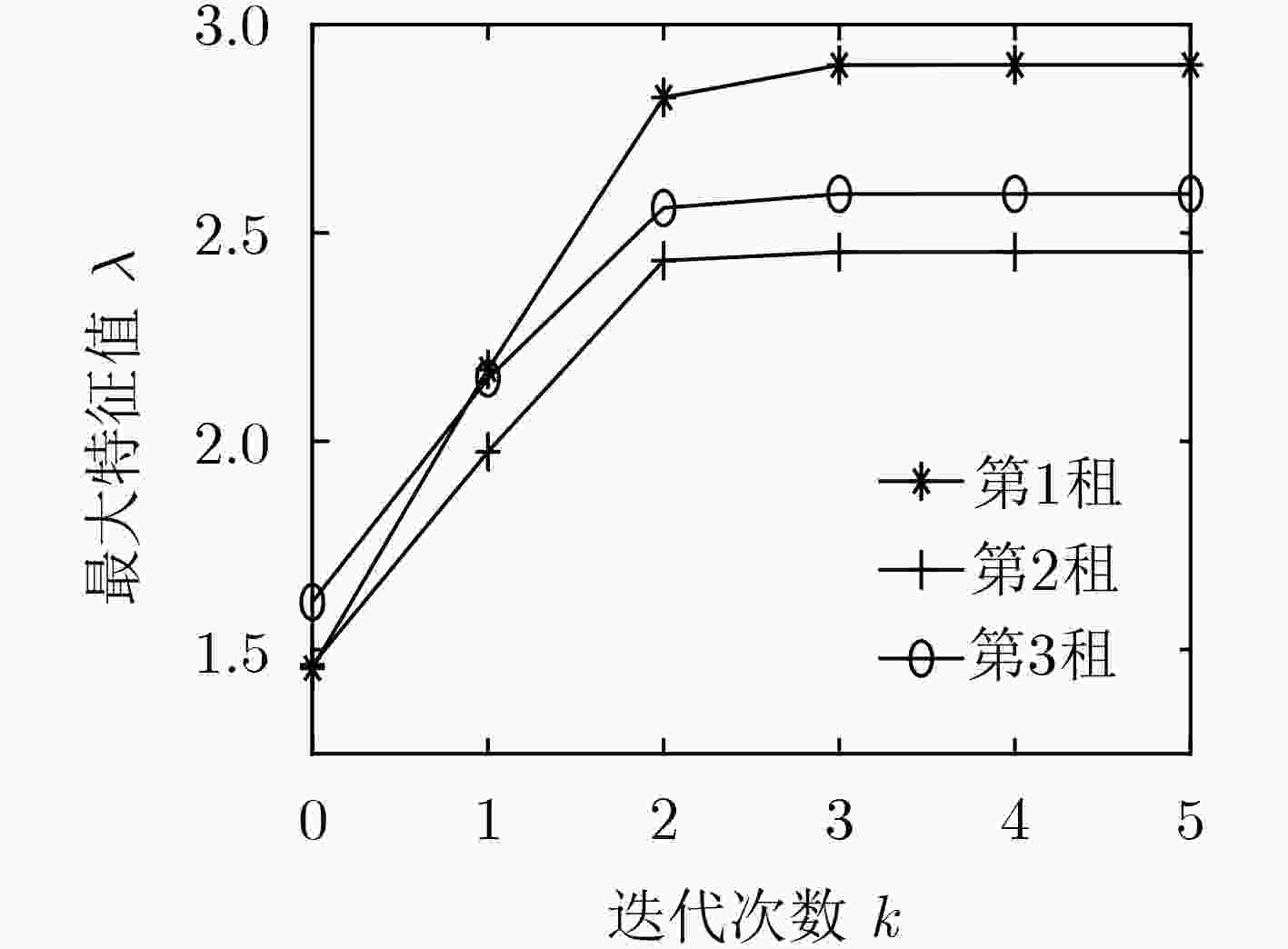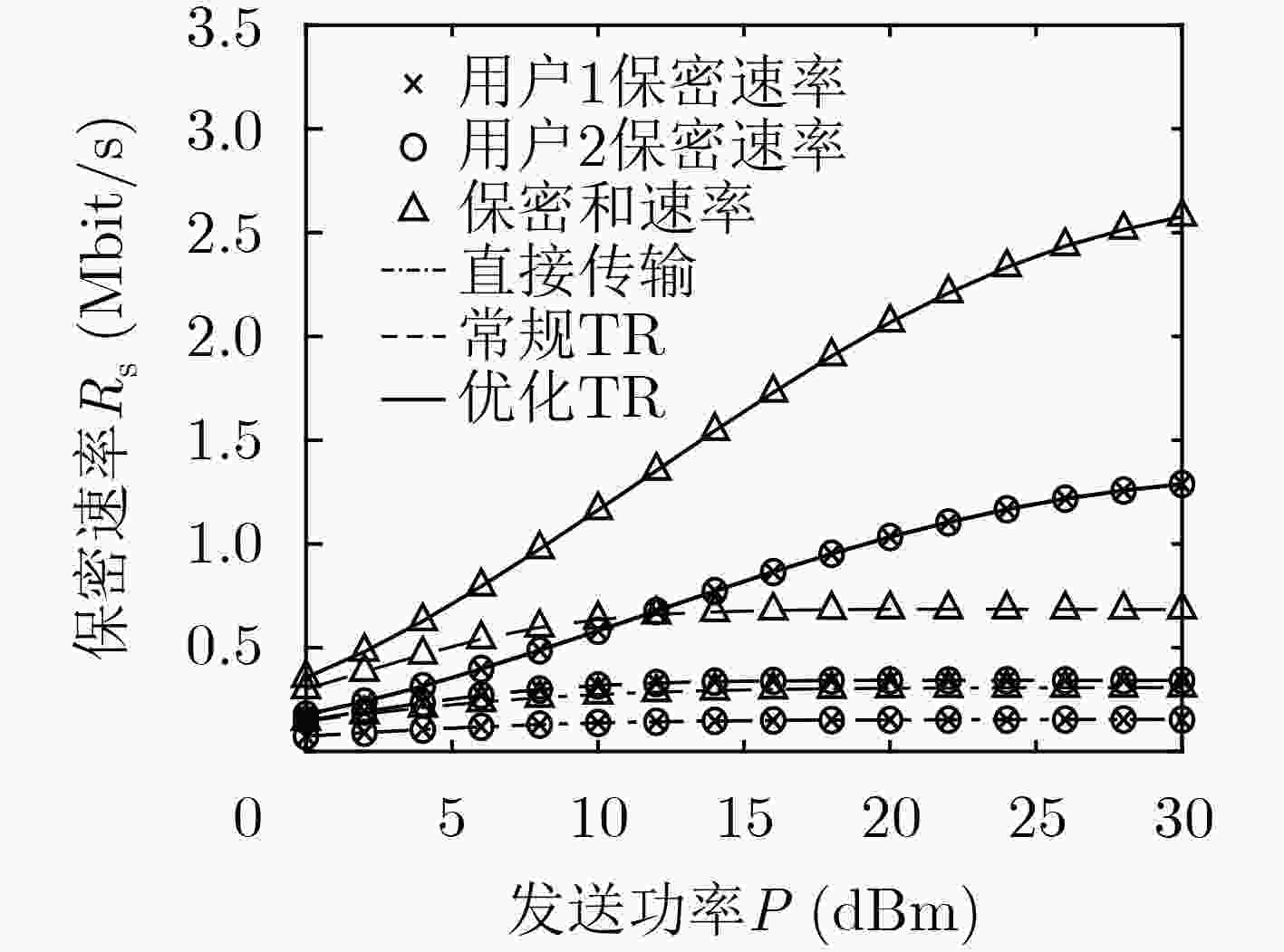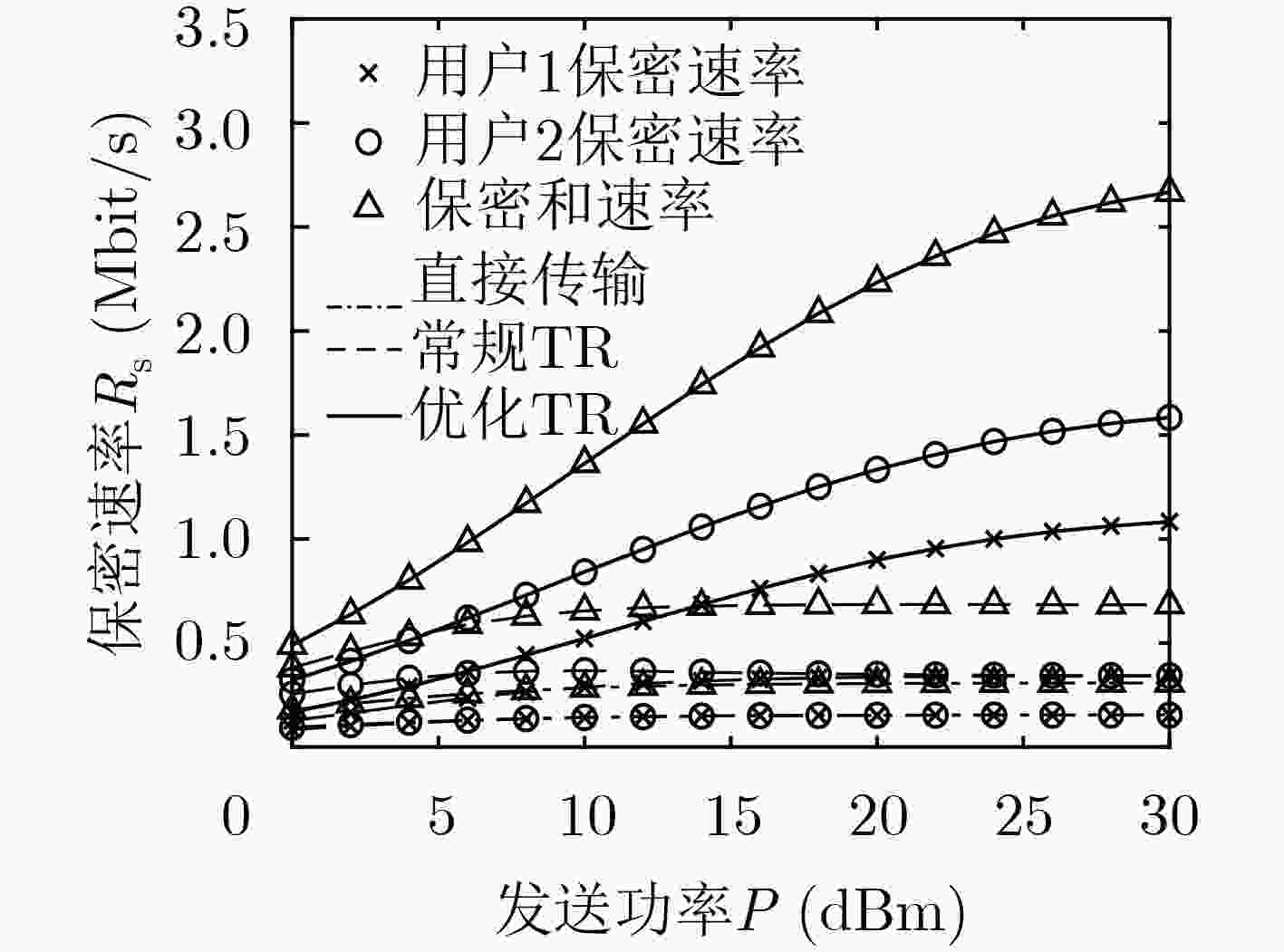Pre-filter Design for Sum Secrecy Rate Optimization in Time-reversal Multiuser Systems
-
摘要:
利用无线信道的特征通过物理层技术实现信息的安全传输是保密通信的一种方式。时间反转传输特有的时空聚焦特性使其具有天然的抗干扰和抗窃听能力,在单发射天线条件下也能获得较好的保密传输性能。该文研究两用户时间反转下行多址安全传输系统中,发送滤波器脉冲响应的优化问题。根据互惠原则将两个发送滤波器的联合优化问题转换为各滤波器的独立优化问题,进一步将其转换为寻找最大特征值及其对应的特征向量的问题,并通过迭代算法进行求解。仿真结果表明,针对保密和速率优化预处理滤波器后,系统的可达保密速率明显优于采用常规时间反转预处理滤波器时的系统和直接传输系统。
Abstract:Utilizing the characteristics of the wireless channel to achieve secure transmission of information through physical layer technology is a way to realize security communications. The time-reversed transmission has natural anti-jamming and anti-eavesdropping capability due to its unique spatial and temporal focusing property, so a good secrecy performance can be obtained even when the transmitter is equipped with single transmitting antenna. This paper studies the optimization of the transmit filter impulse response in a two-user time-reversed downlink multiple access secure transmission system. The joint optimization problem of two transmitting filters is transformed into the independent optimization problem of each filter based on reciprocity principles. This problem is further converted into the problem of finding the largest eigenvalue and its corresponding eigenvector which is solved by iterative algorithm. The simulation results show that by optimizing the pre-filter for sum secrecy rate, the system's sum secrecy rate is promoted and is obviously higher than that of the conventional time-reversed pre-processing filter system and direct transmission system.
-
Key words:
- Physical layer security /
- Time reversal /
- Sum secrecy rate /
- Pre-processing filter
-
表 1 最大特征值求解迭代算法
(1) k=0,设置初始点${{g}}_i^{(0)}$ (2) 循环 (3) k:=k+1 (4) 根${{g}}_i^{(k - 1)}$计算矩阵V和Q; (5) 求解Q–1V的最大特征值$\lambda _i^{\left( k \right)}$以及对应的归一化特征向量
${{g}}_i^{(k - 1)}$;(6) 判断$\left| {\lambda _i^{(k)} - \lambda _i^{(k - 1)} } \right| \le \varepsilon $是否满足,或者是否达到迭代次
数,是跳出循环,否则转第(3)步继续迭代;(7) 输出优化问题解${{{\bar g}}_i} = {{g}}_i^{(k)}$。 -
CHEN Xiaoming, NG D W K, GERSTACKER W H, et al. A survey on multiple-antenna techniques for physical layer security[J]. IEEE Communications Surveys & Tutorials, 2017, 19(2): 1027–1053. doi: 10.1109/COMST.2016.2633387 ZHAO Pu, ZHANG Meng, YU Hui, et al. Robust beamforming design for sum secrecy rate optimization in MU-MISO networks[J]. IEEE Transactions on Information Forensics and Security, 2015, 10(9): 1812–1823. doi: 10.1109/TIFS.2015.2423263 NGHIA N T, TUAN H D, DUONG T Q, et al. MIMO beamforming for secure and energy-efficient wireless communication[J]. IEEE Signal Processing Letters, 2017, 24(2): 236–239. doi: 10.1109/LSP.2017.2647982 HUO Yan, TIAN Yuqi, MA Liran, et al. Jamming strategies for physical layer security[J]. IEEE Wireless Communications, 2018, 25(1): 148–153. doi: 10.1109/MWC.2017.1700015 WANG Beibei, WU Yongle, HAN Feng, et al. Green wireless communications: A time-reversal paradigm[J]. IEEE Journal on Selected Areas in Communications, 2011, 29(8): 1698–1710. doi: 10.1109/JSAC.2011.110918 BOUZIGUES M A, SIAUD I, HELARD M, et al. Turn back the clock: Time reversal for green radio communications[J]. IEEE Vehicular Technology Magazine, 2013, 8(1): 49–56. doi: 10.1109/MVT.2012.2234054 LEI Weijia and YAO Li. Performance analysis of time reversal communication systems[J]. IEEE Communications Letters, 2019, 23(4): 680–683. doi: 10.1109/LCOMM.2019.2901484 NGUYEN H T, KOVCS I Z, and EGGERS P C F. A time reversal transmission approach for multiuser UWB communications[J]. IEEE Transactions on Antennas and Propagation, 2006, 54(11): 3216–3224. doi: 10.1109/TAP.2006.883959 HAN Feng, YANG Yuhan, WANG Beibei, et al. Time-reversal division multiple access over multi-path channels[J]. IEEE Transactions on Communications, 2012, 60(7): 1953–1965. doi: 10.1109/TCOMM.2012.051012.110531 HAN Yi, CHEN Yan, WANG Beibei, et al. , Time-reversal massive multipath effect: A single-antenna “massive MIMO” solution[J]. IEEE Transactions on Communications, 2016, 64(8): 3382–3394. doi: 10.1109/TCOMM.2016.2584051 WANG Li, LI Ruoguang, CAO Chunyan, et al. SNR analysis of time reversal signaling on target and unintended receivers in distributed transmission[J]. IEEE Transactions on Communications, 2016, 64(5): 2176–2191. doi: 10.1109/TCOMM.2016.2547425 CAO Wei, LEI Jing, HU Weidong, et al. Secrecy capacity achievable time reversal pre-filter in MISO communication system and the unequal secrecy protection application[J]. Wireless Personal Communications, 2017, 97(4): 5427–5437. doi: 10.1007/s11277-017-4787-x XU Qian, REN Pinyi, DU Qinghe, et al. Security-aware waveform and artificial noise design for time-reversal-based transmission[J]. IEEE Transactions on Vehicular Technology, 2018, 67(6): 5486–5490. doi: 10.1109/TVT.2018.2813318 LEE N, YANG H J, and CHUN J. Achievable sum-rate maximizing AF relay beamforming scheme in two-way relay channels[C]. ICC Workshops-2008 IEEE International Conference on Communications Workshops, Beijing, China, 2008: 300–305. doi: 10.1109/ICCW.2008.63. -






 下载:
下载:







 下载:
下载:
